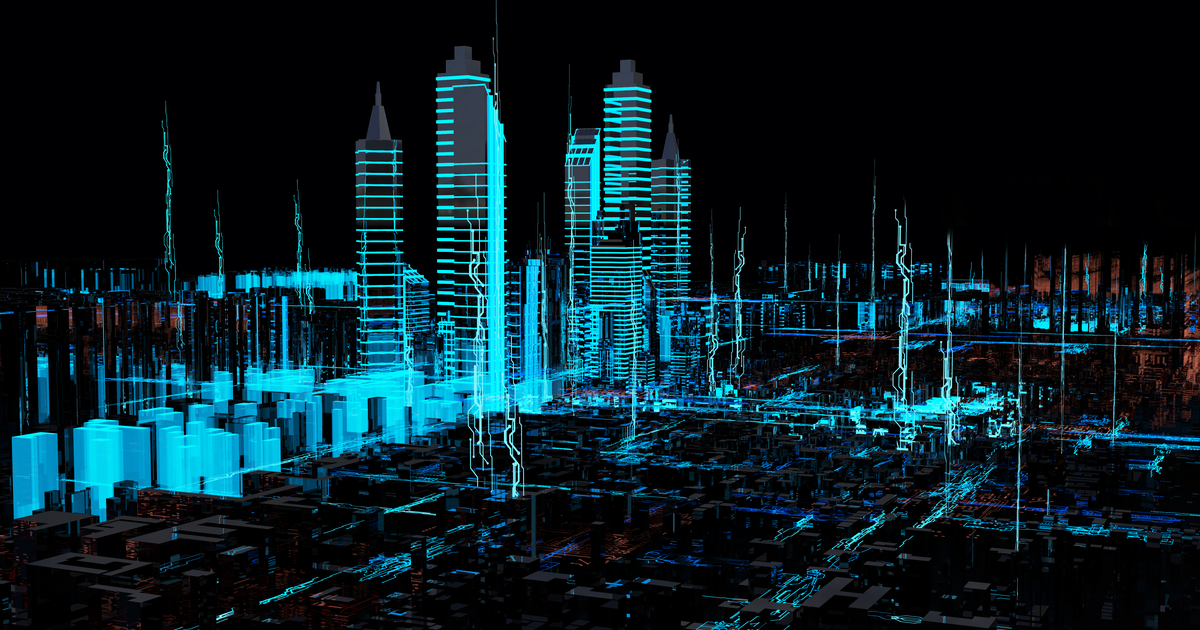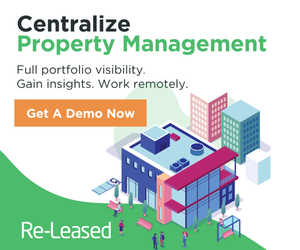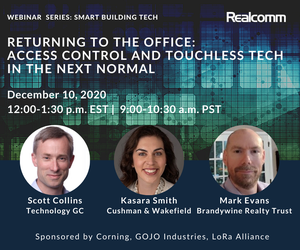Google: An Enterprise's Approach to Digital Buildings

How do we achieve a digital world, digital city or even a digital building with little agreement on what “smart,” “intelligent” or “digital” is? How do we compare digital buildings within a city without any criteria or common ground?
One approach is to focus on creating the infrastructure to allow for any device to work with any application. This builds towards a world much more in line with the explosive potential of the internet, rather than bespoke environments we see in buildings today that are limited in their utility. With this, organizations will be more receptive to new technology and deployments and have the flexibility to enable the key use-cases as and when they are needed that will ultimately drive the industry.
This approach can be achieved by focusing on a few fundamentals:
- Foundational changes to how buildings are designed and constructed
- Creating a technical architecture based on a horizontal layered approach
- Industry standards and certifications for smart technologies and environments
Foundational changes to how buildings are designed and constructed
The construction industry is one of the furthest behind in digitization, but related spending accounts for 13% of the world's GDP. Anything within a commercial built environment that can be monitored, sensored or controlled must follow a common set of principles, regardless of who installs it, who will operate it or what type of IoT it is.
Additionally, a process for implementation, verification and approval of standards is required to create the requisite robust foundation. This can start with each enterprise, who can design these into their own construction processes and standards.
Creating a technical architecture based on horizontal layered approach
A layered approach to define a "smart building" architecture based on a principled design creates an ecosystem that allows the overall industry to thrive and innovate, rather than simply providing a "solution" that is stuck in time and quickly obsolete. Much like standard operating systems such as Linux or Windows, the underlying architecture is a collection of components that, when considered as a coherent whole, provides foundation support for a variety of applications and use-cases.
This consists of roughly 10 layers, each of which addresses a primary role in the system:
(10) Application: Presentation and organization of data to end-users tailored for a specific task.
( 9) Business Intelligence: Low-code ability to create user-facing view into underlying data.
( 8) Machine Learning: Automated analysis and insights into collected data.
( 7) Data Access: Storing data into an organized and accessible repository.
( 6) Data Ontology: Structure for how data is semantically connected and linked. Example is the Digital Buildings ontology.
( 5) Device Management: Provisioning and ongoing operation of devices as a secured asset. An example of this is the open-source UDMI device-to-cloud specification.
( 4) Networking: On-prem communication fabric connecting devices and services, using advanced platforms such as the open-source Faucet SDN controller.
( 3) Device Assurance: Ensures that devices meet with stipulated standards and requirements. As an example, using the open-source Device Automated Qualification (DAQ) framework.
( 2) Edge Compute: Managed compute situated on the edge for performant local capabilities.
( 1) Device Ecosystem: Collection of digital equipment forming the digital building infrastructure.
The overall system, from top-to-bottom, encompasses application end-goals all the way through the base physical devices themselves. Functioning independently, each layer provides core value without requiring vertical-stack lock-in, allowing implementers to pick-and-choose which components make most sense for their own needs.
Digital building certification
In the same way BREAAM and LEED revolutionized the sustainability industry, a common “digital building” certification is required to create a measured baseline between spaces and buildings. It will be difficult to measure on an application level due to the variety; however, if the certification focused on the infrastructure flexibility and digital approach, it would be a foundation that all buildings could aim for and grow beyond as the industry develops.
Summary
To enable a truly smart ecosystem at a city wide (or global) level, the way buildings are designed, built and operated will need to change, with smart ready principles being built into the foundations, and a common technical infrastructure owned and managed by an enterprise.
No one company can solve this problem, the industry needs to work together to build an ecosystem of open standards, tools and products to enable a truly digital infrastructure.
Contributing Authors

Kathy Farrington is a chartered professional engineer and Technical Program Manager at Google. She leads an internal program to make Google's buildings smart. She previously worked at an engineering consultancy where she led a team designing the smart infrastructure of data center, retail and commercial buildings and residential complexes.

Trevor Pering is a software engineer focusing on physical IoT system design with an emphasis on security, networking, testability, and device management. His career has centered around the intersection of physical and cyber systems, covering mobile computing, interactive experiences, and now building-oriented projects. He is the column editor for the IEEE Computer IoT Connections article and active contributor to the FaucetSDN open-source community.
This Week’s Sponsor
FlashParking is the leader in parking technology powering the transformation from isolated parking assets to connected mobility hubs with the first Mobility Hub Operating System. Once underutilized parking assets are optimizing operations, gaining real-time visibility, and connecting to the smart city through FlashParking’s suite of enhanced 21st-century parking, a robust business intelligence engine, and partnerships in the logistics, transportation, and mobility ecosystems. Visit www.flashparking.com to learn more.
Read Next
 5/15/2025
5/15/2025
Tech, Talent and Transformation: 2025 Digie Finalists Announced For 27 years, Realcomm has presented the Digie Awards to acknowledge companies, real estate projects, technologies, and individuals that have advanced the commercial real estate industry through the strategic use of technology, automation, and innovation.
 5/15/2025
5/15/2025
Empowering Space Management with Data-Driven Visualization For effective CRE space management, it’s critical to centralize lease data, maximize rental square footage (RSF), improve energy efficiency and reconfigure spaces to meet changing needs.
 5/8/2025
5/8/2025
The AI-Powered Workplace Evolution: Redefining the Business Landscape In today's rapidly evolving business environment, the fusion of Artificial Intelligence (AI) and Workplace Management is revolutionizing the way organizations approach workspace optimization and operational efficiency.
 3/27/2025
3/27/2025
The Convergence of Edge Computing, Cloud, and AI in Building Automation and Smart Buildings In the built environment, we have seen the convergence of Operational Technology (OT) and Information Technology (IT), later expanding to include Workplace Technologies (WP).



%20(1)%20(1)%20(1).png)










